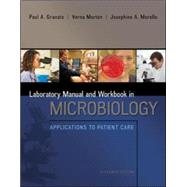The authors have emphasized the purposes and function of the clinical microbiology laboratory in the diagnosis of infectious diseases. The exercises illustrate as simply as possible the nature of laboratory procedures used for isolation and identification of infectious agents as well as the principles of asepsis, disinfection and sterilization. Attention is given to the role of the health professional in regard to appropriate collection of clinical specimens and the applications of aseptic and disinfectant techniques as they relate to patient care.









